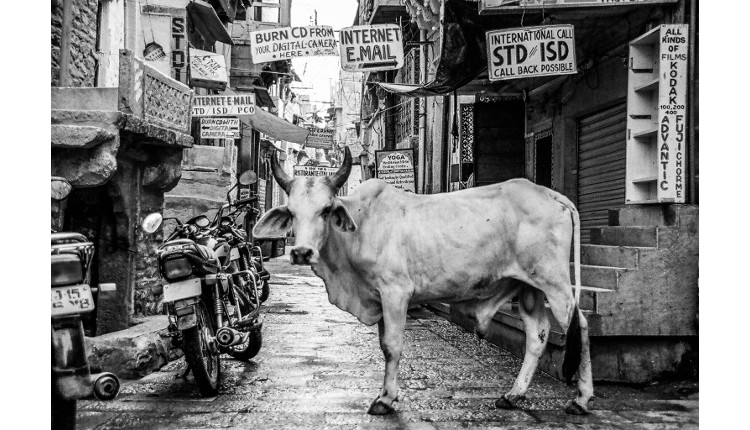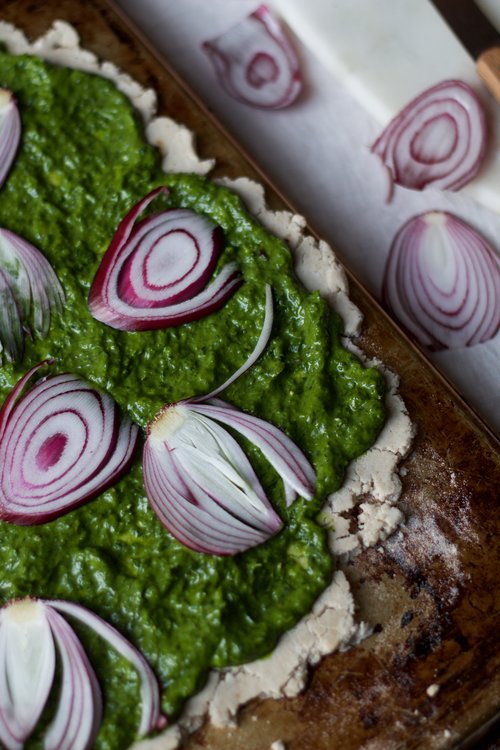9 Reasons to Cut Back on Meat (In Case Climate Change Wasn’t Enough)
Are you considering giving vegetarian eating a go? If so, there’s no better time than the present. October is Vegetarian Awareness Month, and the celebration can include everyone — carnivores, too. Even if you’re not ready to adopt a vegan lifestyle, you can make a significant difference by reducing your meat consumption.
Doing so benefits your health as well as the planet. Get your shopping list ready — here are nine great reasons to visit your local farmers market.
1. Reduce Methane Emissions
Cows are intelligent creatures, but they’re also gassy ones. In their wild state, cows dine on grasses and travel in herds of around 100 animals. However, industrial farms may house thousands of animals fed primarily on corn. The bovine digestive system produces a tremendous amount of methane, and manure releases further levels of this toxic gas. The negative climate effects of methane are 34 times higher than the impact of carbon dioxide.

If you want to reduce your meat consumption but aren’t ready to give up everything, start by cutting back on your beef consumption. Aim to eat beef no more than once per week. Better yet, reserve it for special occasions like birthday dinners or holiday meals.
2. Protect Irreplaceable Ecosystems
Right now, farmers in the Amazon are burning huge swathes of land to make room for cattle production. This provides yet another reason to cut down on beef — doing so protects irreplaceable ecosystems like rainforests. Carbon emissions from the fires threaten to raise global temperatures.
The Amazon is home to millions of plant and animal species, many of which remain undiscovered or unnamed. The cure for cancer could await humankind within — but if it burns before we discover it, we’ll never know. Plus, we deprive future generations of the chance to experience the majesty of rare animals. If you typically hit the drive-thru for a burger three times a week, replace one trip with a salad.

3. Cut Down on Carbon Emissions
Bulls can weigh more than two tonnes. Each adult pig weighs 700 pounds or more. The more weight you have to ship, the more carbon emissions you produce while doing so. Can you imagine how many heads of kale you could transport for the ecological equivalent of sending one cow out for processing?
Lower-weight foods create a smaller carbon footprint during transport than bulkier items. Additionally, it takes energy to keep the meat cool during shipping.
4. Prevent Heart Disease
When you eat meat, your body produces a chemical known as Trimethylamine N-oxide (TMAO) during digestion. This substance is a byproduct of intestinal bacteria. Because red meat is fibrous, your body produces three times more of this chemical when you consume it.

Research suggests TMAO enhances cholesterol deposits on arterial walls. Studies also say the substance interacts with platelet function. Platelets form blood clots, putting you at greater risk for heart attack or stroke.
Processed meat also increases your heart disease risk. For every 100 grams of ham or bologna consumed daily, your risk of cardiovascular problems rises by 19%. If you visit a sandwich shop, opt for cheese and vegetables or tuna.
5. Lower Your Cancer Risk
Some vegetarians — or pescatarians — do eat fish. However, the method of preparation matters. Consuming Cantonese-style salted fish increases your risk of nasopharyngeal cancer. Diets high in other meats also increase the risk of this and other forms of the disease.
Hormones in meat could negatively impact health and spur the development of certain reproductive cancers. Fortunately, research indicates artificial hormones used in livestock-rearing produce a negligible impact on corresponding versions in humans. However, “negligible” does not mean these substances produce no changes. If you have other risk factors for breast or testicular cancer, you should reduce meat consumption.
6. Improve Your Nutrient Intake
Meat does provide you with a complete protein source, as well as vitamin B-12. However, researchers discover more about the ways different phytonutrients benefit human health daily. Each color of fruits and vegetables contains a unique phytonutrient profile corresponding to its hue. Nutritionists recommend eating plants in a rainbow of colors daily to boost your intake of multiple nutrients.
Salads offer one way to increase your vegetable and fruit intake. Consider trying the following recipes:
15-minute zoodles marinara: If you’re battling insulin resistance, zoodles, or zucchini noodles, offer a perfect pasta alternative. They contain only 15 calories per serving and won’t spike your blood sugar like refined flour. The bright cherry tomatoes and basil make this dish a delicious way to get red and green phytonutrients.
Cauliflower-rice stuffed peppers: This is a great main dish if you struggle with prediabetes. It’s packed with protein yet is either vegan or vegetarian, depending on the toppings you select. Cauliflower rice fills you like the real deal without impacting your blood sugar as significantly.
Roasted harvest vegetables: Autumn is here, and that means carrots and Brussels sprouts are in season. This makes a great side dish for holiday meals or a nutritious dinner in itself. You can add other seasonal veggies like broccoli if you wish.

7. Get Moving in the Fresh Air
Sure, summer is over — but many fruits and vegetables are ripe for picking. After all, they call it the harvest season for a reason. Get some healthy outdoor air by visiting your local farmers market to pick up the freshest produce around. When you reap vegetables, vitamins such as C start to break down. The fresher your food, the more nutrients you consume. Plus, you can form relationships with vendors and inquire about things like pesticide use.
8. Develop a Closer Connection with the Earth
Depending upon where you live, it might be too late to plant an outdoor garden unless you have a greenhouse. However, nothing can stop you from starting a container version on a sunny windowsill or enclosed patio.
You can’t get any fresher than ripe from the vine, so plant a tomato in a large pot. Place it outdoors on days when the weather permits and bring it inside at night. Plant a kitchen counter herb garden for basil and oregano.
Something about growing things restores your connection with the planet — and inspires you to save it by reducing your meat consumption.
9. Save Animals from Suffering
Do you have a pet dog or cat? Chances are you wouldn’t munch on Fluffy or Fido. You probably consider them smart and marvel over their antics. Cows and pigs possess as much sentience and intelligence, and possibly more.

If you accept that animals have rights, then it follows you wouldn’t deprive them of the most basic one — the right to life. Yes, animals eat each other in the wild — but human beings can reason. Most of us no longer need to consume animal flesh to meet our caloric needs. We can get all the amino acids we need from plants.
Plus, many factory farms impose savage conditions upon the animals they raise. Sows in gestation crates cannot stand or even turn around. Think of how painful your last international plane flight was, and then imagine being stuck in that tiny seat for life.
Celebrate Vegetarian Awareness Month by Eating More Plant-Based Foods
Even if you don’t eschew meat entirely, vegetarian awareness month offers the perfect time to reduce your consumption. Whether you institute meatless Monday or abstain for the month, commit to adopting a more plant-based diet this October.
